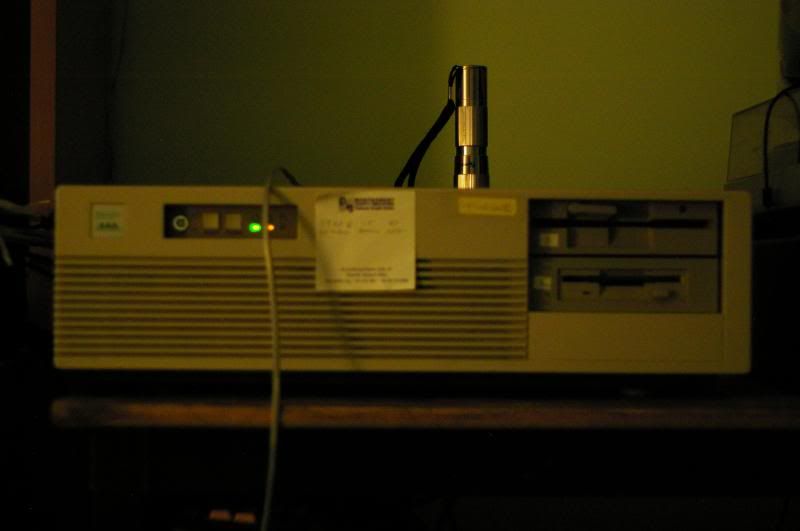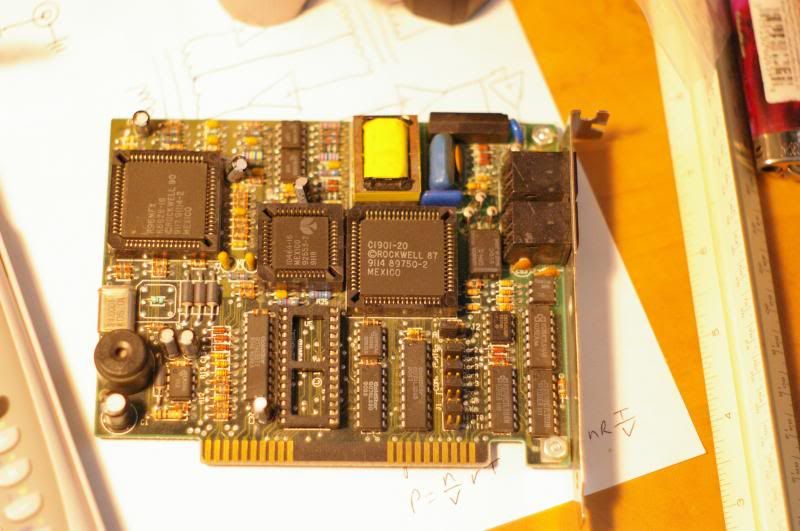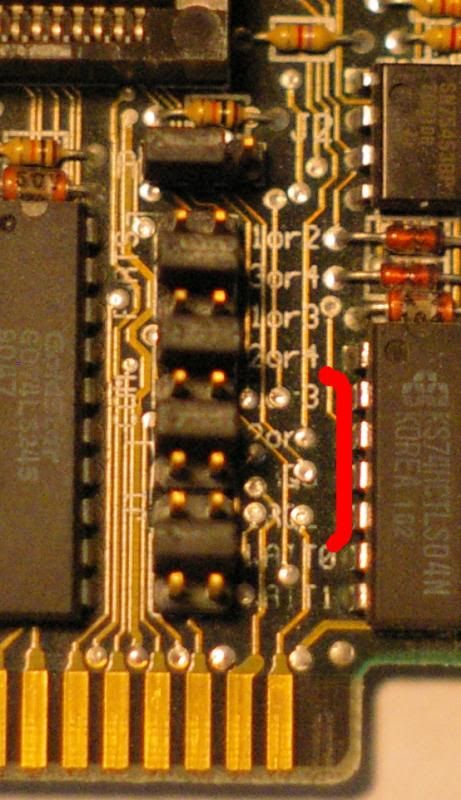
(apparently at 4am flashlights take over your camera and make themselves the focal point of all photos)
Specifically, I was trying to get a dial up modem and terminal emulation software installed on it in order to cruise through some of the last remaining BBSs out there, in true retro style. And well, I hit a wall. That wall is made up of the boxes of old computer bits that I have from the late 80s and into the 90s that have little to no documentation because, well, it was the internet boom and many companies formed, but not all survived. Hence all their documentation which may or may not have existed online is no longer. So when I came across the only non plug-and-play ISA modem I have, of course, nobody knows how it works.

It's a Zoom Faxmodem pc96/24 which means that it has a max speed of 9600bps and slowest of 2400. it's got a bunch of Rockwell chips on it and from other pictures on the net, it also comes with the option of a rom chip in the empty socket lower middle of the card. Past this, I can't get any of the terminal emulators to see it.
There is some solace however. Some companies were gracious (or cheap) enough to basically provide their manual on the board itself, with well defined jumpers. Keeping this in mind, I took a look at my card and was thrilled and then depressed. The manufacturer (Zoom) had in fact labelled these jumpers, but wouldn't you know it, they weren't great at their placement of text near vias. Once I was able to figure out (just about) how to strap it for which com port you wanted it to be, I tried strapping the IRQ to find the (I've highlighted it) part of the board below.

I could guess at what these say, but... I don't even know if I'm missing a jumper, considering that the pins that I think are for the IRQ don't actually have any on them.
One site that I usually rely on for things like this is stason.org which is a really great resource for when you have no idea what you're holding in your hand, but know the serial number and that it's an ISA card. Unfortunately they don't have my modem in there, or it's one of the unidentified ones that I don't feel like sifting through.
I was able to find some for sale, which would give me a brand new one, with documentation and software probably, but that would mean, like, actually paying money for a 9600bps dial up modem that I already have and I just... I just can't justify that.
I do have another route for playing around with BBSs though. I have a WYSE terminal and an external dial up modem that I have paired. I didn't want to use it with the 386 only because there are open card slots in it and the modem takes up space and a power plug. (I used to do a little party trick with it, using the terminal to tell the modem in Hayes codes to dial a friend's cell phone who would then be amazed that I had called them with a modem.) That setup would probably work with a BBS but I kinda wanted to do more than just view it if I could. I also just wanted to have a modem on my computer that I could use to call it remotely if I wanted to, or setup some kind of BBS of my own. So maybe I'll see if I can find any other options.
(I'll talk a little more about the 386 and the plans I have for it in a later post. It's kind of a lot of dreaming with too many cards and involving other computers and I'll just give that its own post...)

No comments:
Post a Comment